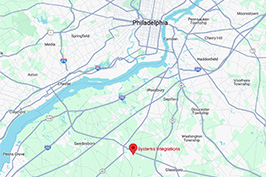Embracing the Future: Why Cloud-Based Card Access Control Systems Outshine On-Premises Solutions
In the evolving landscape of physical security, the debate between cloud-based and on-premises card access control systems is increasingly relevant. While both have their merits, cloud-based solutions are gaining an edge for modern organizations. Let’s explore why, considering their pros and cons, and delve into the nuances of software service agreements and server hardware requirements for on-premises systems.
Cloud-Based Card Access Control Systems: A Step Towards Flexibility and Efficiency
Pros of Cloud-Based Card Access Control Systems:
- Ease of Access and Management: Cloud systems can be accessed and managed remotely, offering unparalleled flexibility.
- Seamless Updates and Upgrades: They benefit from automatic updates, ensuring your security measures are always up-to-date without any manual intervention.
- Scalability: These systems can easily grow with your business, adding or removing access points as needed without significant infrastructural changes.
- Cost-Effective in the Long Run: Despite ongoing subscription fees, cloud-based systems typically require less upfront investment and lower maintenance costs.
- Reduced IT Overhead: With the cloud provider managing most aspects of the infrastructure, your IT team can focus on other critical tasks.
Cons of Cloud-Based Card Access Control Systems:
- Internet Dependency: The primary drawback is their reliance on stable internet connectivity.
- Data Security: While most cloud providers offer robust security, concerns about data privacy and security are valid considerations.
On-Premises Card Access Control Systems: Traditional but Increasingly Outdated
Pros of On-Premises Card Access Control Systems:
- Complete Control: Total control over data and system management.
- Customization: Ability to tailor the system extensively to specific needs.
Cons of On-Premises Card Access Control Systems:
- High Initial Costs: Significant upfront investment in hardware and software.
- Maintenance and IT Requirements: Requires a dedicated IT team for ongoing maintenance, updates, and troubleshooting.
- Scalability Challenges: Expanding the system can be costly and complex.
- Software Services Agreements: Often necessitates long-term commitments with vendors for software maintenance, updates, and support.
- Server Hardware Requirements: Requires substantial server hardware, which can be expensive to acquire, operate, and maintain.
Software Services Agreements and Server Hardware for On-Premises Systems
On-premises solutions often tie you into lengthy software service agreements, which can be a double-edged sword. While they provide support and updates, they also lock you into long-term financial commitments and dependency on a single vendor. Moreover, the server hardware requirements are not trivial – they demand a significant initial outlay, not just for purchase but also for energy, space, and maintenance.
Conclusion: Why Cloud-Based Systems Are the Future
In summary, while on-premises card access systems offer control and customization, they are increasingly overshadowed by the agility, scalability, and cost-effectiveness of cloud-based solutions. The latter’s ability to provide robust security with less hardware, reduced IT burden, and greater flexibility positions it as the preferable choice for most modern organizations. As technology continues to evolve, the trend towards cloud-based solutions is a step towards a more secure, efficient, and adaptable future in access control.







